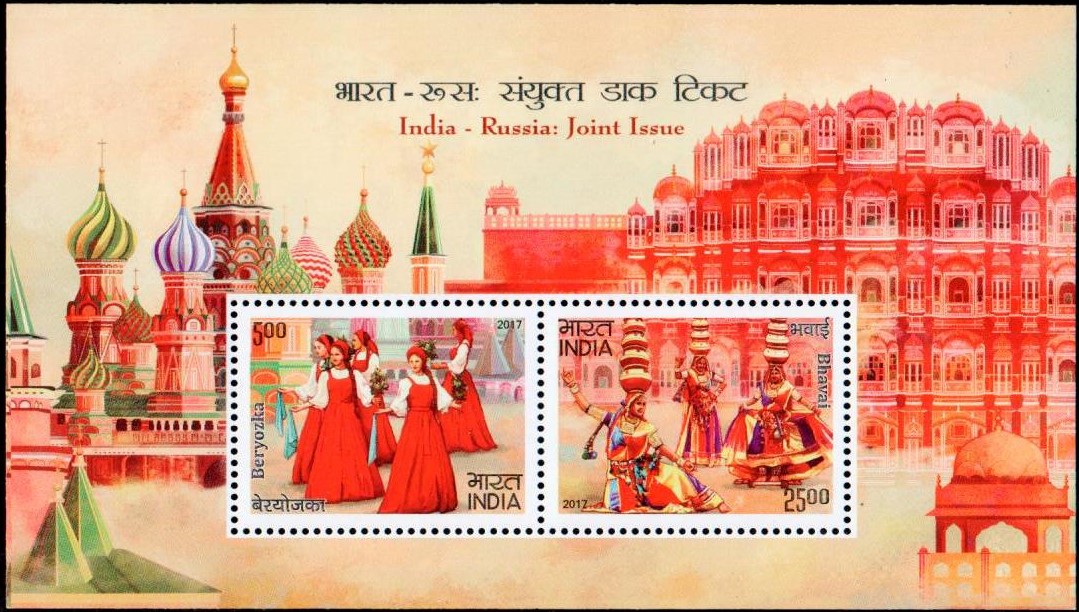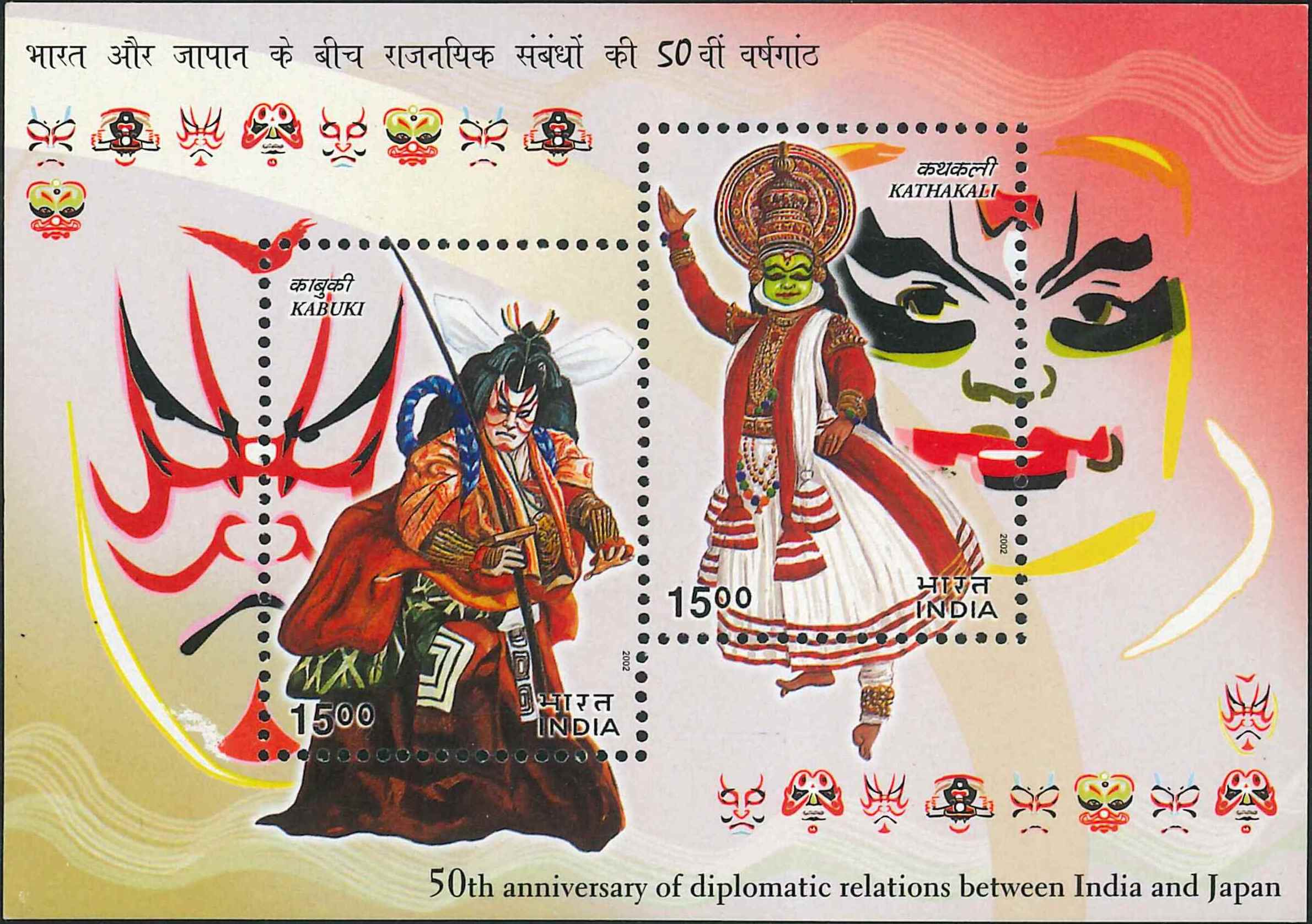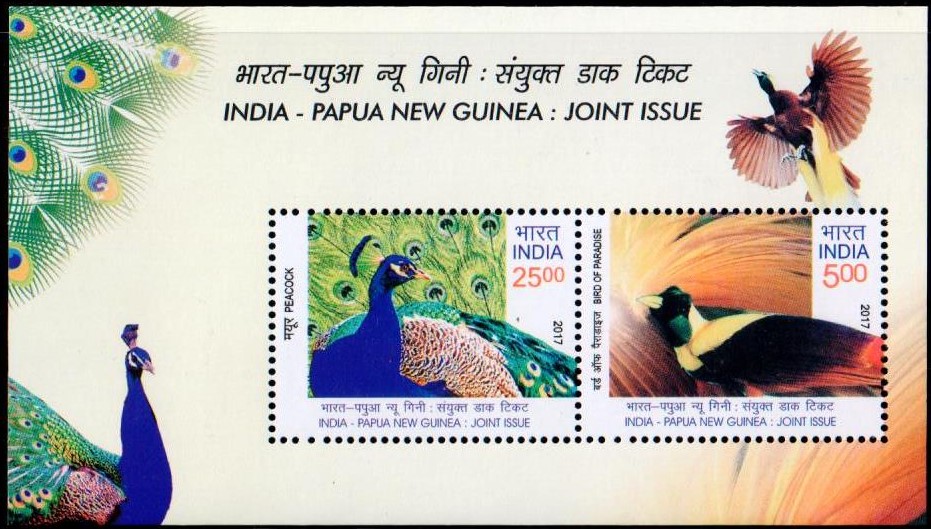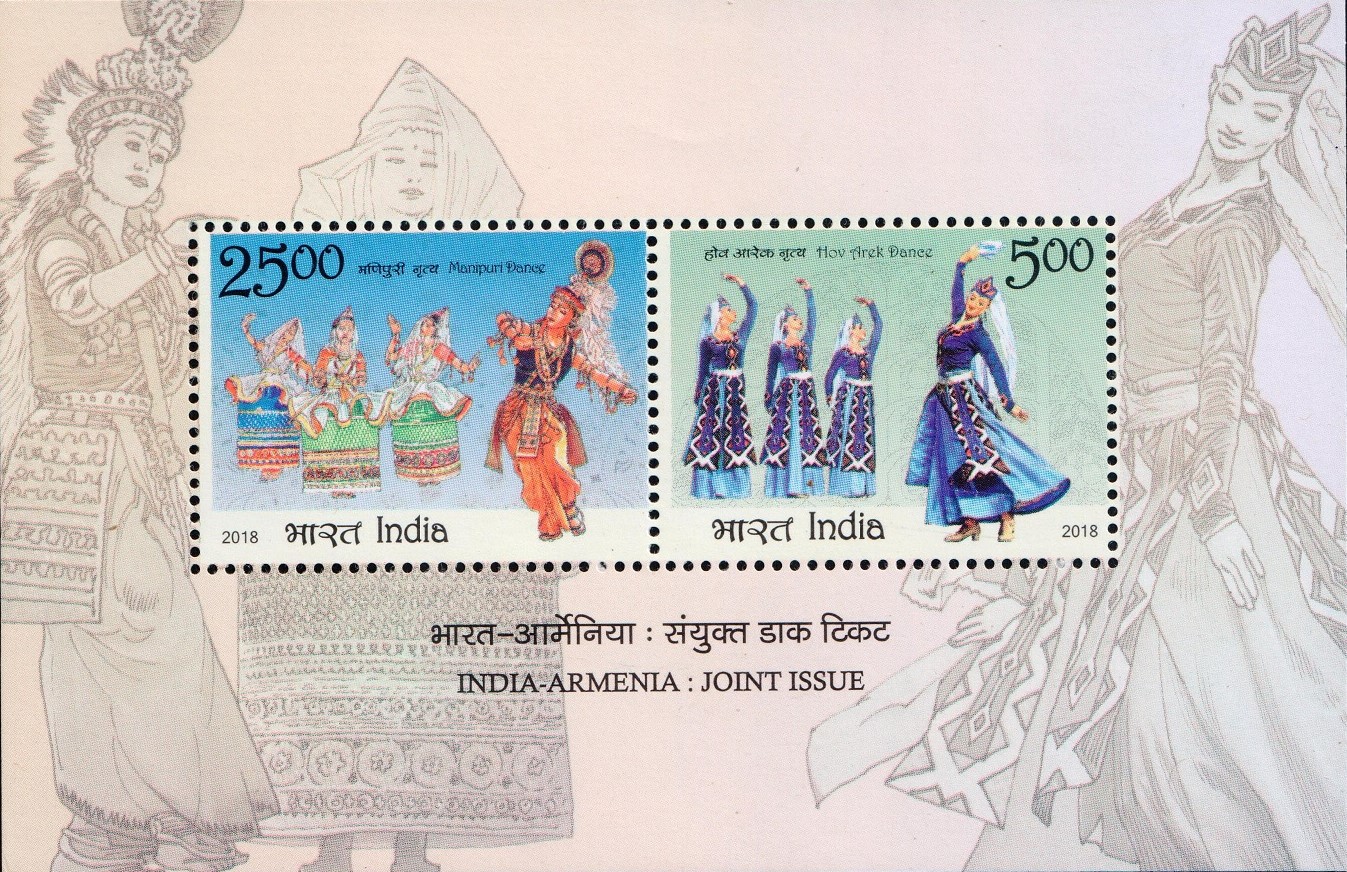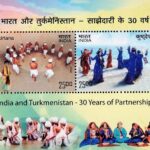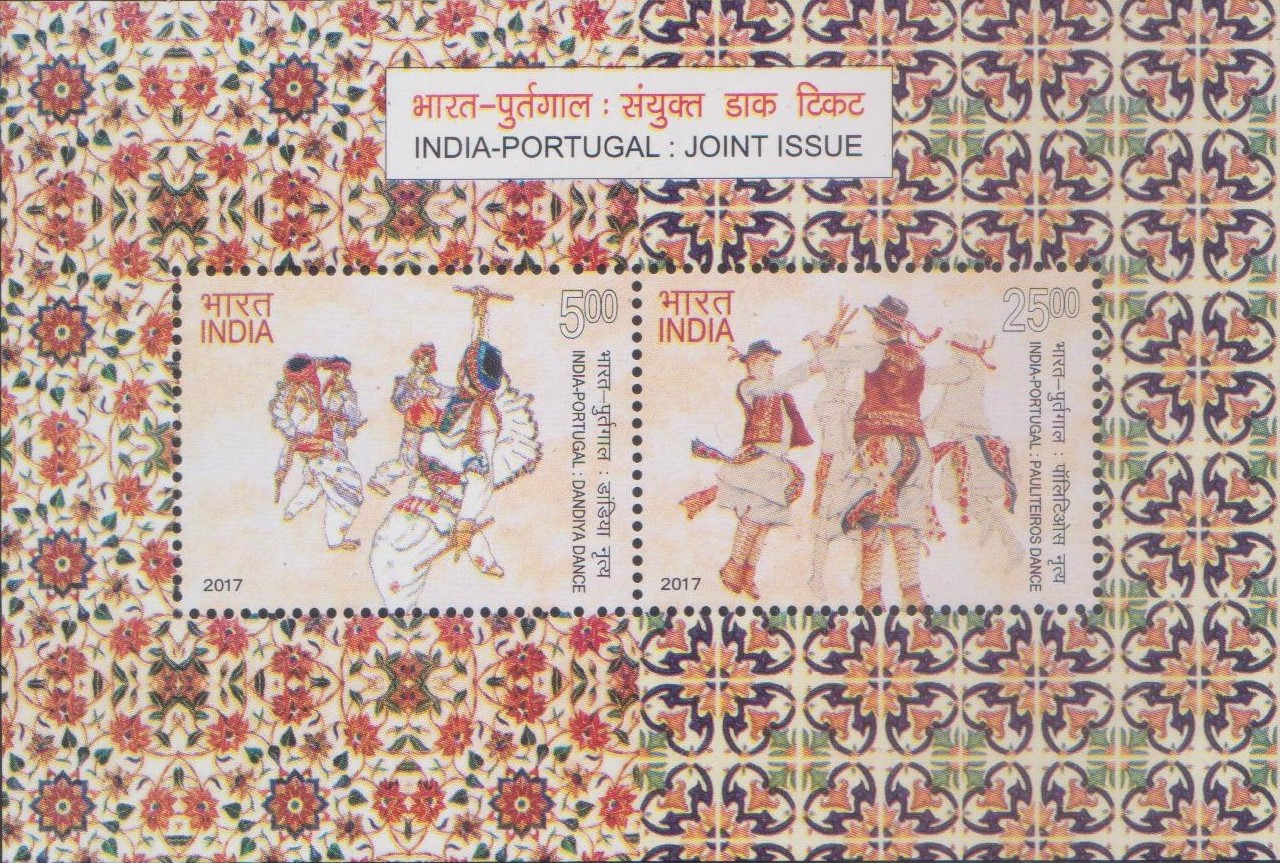
India-Portugal : Joint Issue
Complete Set of 2 nos of postage stamps on the Folk Dances of India and Portugal : Dandiya and Pauliteiros :
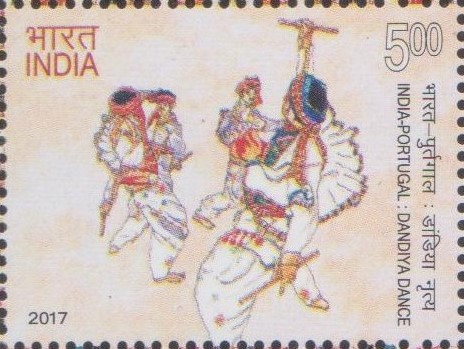
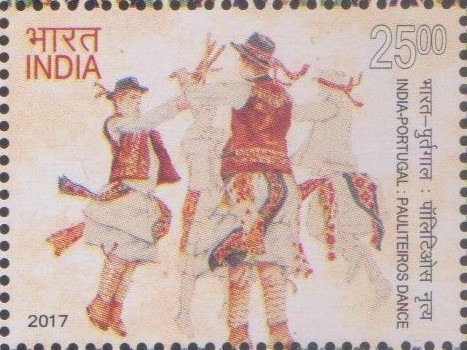
 Issued by India
Issued by India
Issued on Jan 7, 2017
Issued for : Department of Posts is pleased to release a set of two Commemorative Postage Stamps on theme India–Portugal Joint Issue featuring ‘Dandiya Dance’ of India and ‘Pauliteiros Dance’ of Portugal.
Credits :
Stamp / Miniature Sheet / FDC / Brochure : Sh. Subir Das
Type : Miniature Sheet, Mint Condition
Colour : Multi Colour
Denomination : 500 & 2500 Paise
Stamps Printed : 3.10 Lakh each
Miniature Sheet Printed : 1.10 Lakh
Printing Process : Wet Offset
Printer : Security Printing Press, Hyderabad
About :
- India and Portugal enjoy excellent bilateral relationships with frequent and active interaction through different platforms that allows both countries to exchange views on many issues of common concerns. The countries today share warm and friendly ties with close political, cultural and people to people ties. Portugal and India also cooperate actively in multilateral fora including support for each other’s candidatures. The collaborations have been fruitful and beneficial for both countries and the ties of both countries continue to grow from strength over the years.
- To explore the new possibilities of development in postal operations and to promote Philately in both countries, the India-Portugal Joint stamp issue is being released. Both the countries have mutually agreed upon depicting the Folk Dances of both the countries – Dandiya Dance for India and Pauliteiros Dance for Portugal.
- Dandiya Dance:
- Dandiya dance is featured and most popular dance of Navratri evenings in the Indian State of Gujarat. It is performed specially during Navratri because of the significance it holds. It was originated as devotional dance, which was always performed in Goddess Durga’s honor. It is the dramatization of a mock fight between the Goddess and Mahishasura – the mighty demon-king. The sticks of the dance represent the sword of Durga. Women normally perform it in a graceful and rhythmic manner in a circle as they rotate around the ‘mandvi’.
- In Dandiya Dance, attired in colourful costumes men and women dance in two circles, with colourful sticks in their hands. The women wear traditional dresses glittering with mirror work and heavy jewellery, while men look very attractive in their traditional colourful costumes. During the dance, dancers energetically whirl and move their feet and arms in a complicated, choreographed manner to the tune of the music with a lot of drum beats in various rhythms. The dhol is used as percussion instrument along with the dholak, tabla, bongos etc.
- Dandiya dance is known for setting the festive mood. Today, the dance form is not just restricted to Gujarat. It is performed in many other states all over the country, during the festive season of Navratri.
- Pauliteiros:
- The Pauliteiros are those who practice a dance typical of Terras de Miranda, in the northeast of Portugal. The dance is carried out by group of men which includes eight dancers and three musicians, who were an outfit composed of an embroidered skirt and linen shirt, brown waistcoat, leather boots, woollen socks and a hat, usually decorated with flowers. They perform a complex choreography using sticks to the sound of the bagpipe, the snare drum and a brass drum or the “flauta pastoral” (a traditional recorder) and castanet – the Lhaco.
- Lhaco is the name given in the Mirandese Language to each of the melodies, including text and choreography, that part of the Pauliteiros dance. The words to the lhacos are mostly in Mirandese, although some are in Spanish or Portuguese.
- The Pauliteiros often represent Terras de Miranda at events abroad, but the true origin of this dance is not known. It may have appeared in Transylvania during the Iron Age; a sword dance that spread through Central Europe until it reached the Iberian Peninsula. There are references alluding to the fact that, later, the Celtiberian’s performed these dances before battles, substituting the swords for sticks. Romans, Suebi and Visigoths also upheld this tradition, associated with fertility rituals during agricultural cycles. By the tenth century, the Christian Church adopted this dance during festivals in honor of saints, which were made to correspond to periods of solstice and equinox. The Pauliteiros travelled the villages, taking part in processions and gathering alms. They still take their collection in this way today.
- Text : Based on the material received from Portugal Post and available on internet.
Subscribe
Login
0 Comments


